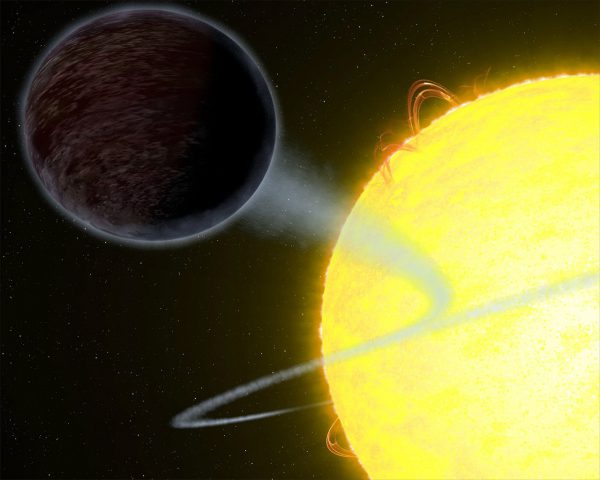
1400 light-years away there is a planet in the direction of the constellation Auriga. This exoplanet known as WASP-12B is tidally locked to its sun, day is always day and night is always night. This is due to the planet being only 3 million kilometres from its star, which in Astro distances is very small.
WASP-12B is a hot Jupiter, a gas planet that due to its short distance from its sun us incredibly hot. So hot in fact that many molecules cannot survive the 2538-degree C temperature and the gas giant cannot form clouds. Without clouds, the light from the star cannot reflect into space and light penetrates deep into the atmosphere where it is absorbed by hydrogen and converted into heat.
It absorbs so much light, 94% of visible light that it appears black to the Hubble Space Telescope. How did Hubble find a black planet in the darkness of space? As the search for most exoplanets shows a dip in starlight as a planet passes in front of its star. The amount of dim tells astronomers how much reflected light is given off by the planet. With a planet as dark as WASP-12B no reflected light was detected, which meant the dayside of the planet absorbed more of the light entering it.
WASP-12B is not the darkest exo-planet we’ve found. TrES-2b (TrES-2 or Kepler-1b) is an extrasolar planet orbiting the star GSC 03549-02811 located 750 light-years away from the Solar System. The planet has been identified in 2011 as the darkest known exoplanet, reflecting less than 1% of any light that hits it.
Hubble Astronomers described WASP-12B as “as black as fresh asphalt” and with TrES-2b open another interesting category in the discovery of new exoplanets.





